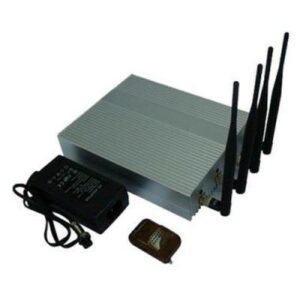In today’s digital age, where internet connectivity is ubiquitous, ensuring the security of our networks is paramount. One crucial component of network security is the router firewall, which acts as a barrier between our local network and the vast expanse of the internet.
While firewalls are essential for protecting our devices and data from external threats, they can also have a significant impact on our browsing experience.
In this article, we’re going to uncover the intricate dynamics of router firewall settings and their profound implications on our browsing activities.
Understanding Router Firewall Settings

- Compatible with major cable internet providers including Xfinity, Spectrum, Cox and more. NOT compatible...
- [Compatibility] 12V Power Supply Adapter Compatible with Netgear, Linksys, Asus,Motorola, Motorola/Arris...
To comprehend how your router firewall settings can affect browsing, it’s essential to first understand the role of the firewall itself. Essentially, a router firewall is a security mechanism that monitors and controls the incoming and outgoing network traffic based on predetermined security rules.
These rules dictate which types of traffic are allowed or blocked, helping to safeguard the network from unauthorized access, malware, and other threats.
Router firewalls typically offer various configuration options, allowing you to customize your security settings according to your specific needs and preferences.
Some of the most common firewall settings include:
- Inbound Filtering: This setting controls the incoming traffic from the internet to the local network. It allows you to specify which types of incoming traffic are permitted or denied based on factors such as port number, protocol, or source IP address.
- Outbound Filtering: Conversely, outbound filtering regulates the outgoing traffic from the local network to the internet. It enables you to restrict certain types of outbound traffic, such as specific applications or protocols, to prevent unauthorized data transmission.
- Port Forwarding: Port forwarding is a technique used to redirect incoming traffic from a specific port on the router to a designated device or service on the local network. It’s commonly used to host servers or applications that require direct access from the internet, such as web servers or online gaming platforms.
By understanding and configuring these firewall settings effectively, you can strengthen their network security while also optimizing your browsing experience.
However, it’s crucial to strike the right balance between security and usability, as overly restrictive firewall settings can sometimes hinder legitimate network activities, including web browsing.
Now, let’s delve deeper into how router firewall settings can affect the browsing experience.
Impact of Firewall Settings on Browsing Experience
Router firewall settings can have a significant impact on various aspects of the browsing experience. Here are some ways in which firewall configurations can affect how you access and interact with online content:
- Access Restrictions: One of the primary ways in which firewall settings influence browsing is by imposing access restrictions on certain websites or online services. For example, if a firewall is configured to block access to specific categories of websites, such as social media or streaming platforms, you may find yourself unable to access these sites, thus limiting your browsing options.
- Traffic Filtering: Firewall settings that employ deep packet inspection (DPI) or content filtering techniques can impact the flow of network traffic, including web browsing. While these measures are designed to enhance security by identifying and blocking malicious content, they can sometimes inadvertently block legitimate websites or interfere with the loading of web pages.
- Port Restrictions: Firewalls that restrict access to certain ports or protocols can also affect browsing performance. For instance, if a firewall blocks access to commonly used ports like HTTP (port 80) or HTTPS (port 443), you may experience difficulties accessing websites that rely on these protocols for communication.
- Latency and Packet Loss: Overly aggressive firewall settings or misconfigurations can introduce latency and packet loss into the network, leading to sluggish browsing speeds and frequent interruptions. This can be particularly problematic for activities that require real-time communication, such as online gaming or video conferencing, where even small delays can impact the user experience.
By carefully configuring firewall settings and implementing appropriate security measures, you can strike a balance between security and usability, ensuring a smooth and secure browsing experience.
Best Practices for Optimizing Router Firewall Settings
To optimize router firewall settings for browsing, consider the following best practices:
- Regular Updates: Keep your router firmware and firewall rules up to date to ensure compatibility with the latest security standards and protocols.
- Customized Filtering: Tailor firewall rules to meet your specific security needs while minimizing unnecessary restrictions on browsing activities. Take advantage of features like whitelisting and blacklisting to allow or block access to specific websites or categories of content.
- Monitoring and Logging: Enable logging and monitoring features on your firewall to track network activity and identify potential security threats or performance issues. Regularly review firewall logs to identify any anomalies or suspicious activity that may require further investigation.
- Testing and Tuning: Periodically test and fine-tune firewall settings to optimize performance and security. Conducting penetration tests or vulnerability assessments can help identify weaknesses in your network defenses and ensure that firewall configurations are effectively mitigating potential risks.
By following these best practices, you can maximize the effectiveness of your router firewall settings while minimizing disruptions to your browsing experience.
Troubleshooting Firewall-related Browsing Issues
Despite careful configuration, you may encounter browsing issues stemming from firewall settings. Here’s how to troubleshoot common problems:
- Access Denied Errors: If you encounter “Access Denied” messages when trying to access certain websites, check your firewall settings for any restrictions or blacklisting rules that may be blocking access. Adjust the settings as needed to allow access to the desired sites.
- Slow Browsing Speeds: Slow browsing speeds can result from overly restrictive firewall settings or network congestion caused by excessive traffic filtering. To address this, review and optimize firewall rules to reduce unnecessary filtering and improve network performance.
- Intermittent Connectivity: If your browsing experience is characterized by intermittent connectivity issues, such as pages failing to load or sudden disconnections, inspect firewall logs for any indications of network disruptions or packet drops. Adjust firewall settings or network configurations to mitigate these issues.
- Inconsistent Page Loading: Inconsistent page loading, where some websites load normally while others do not, may indicate firewall-related issues. Check firewall rules for any inconsistencies or conflicts that may be affecting certain websites and adjust settings accordingly.
- Security Warnings: If you encounter security warnings or certificate errors when accessing websites, it may indicate that your firewall settings are blocking access to sites with invalid or expired certificates. Review firewall settings to ensure that legitimate websites are not being erroneously blocked.
By systematically troubleshooting firewall-related browsing issues, you can identify and resolve underlying problems to restore optimal browsing functionality.
Conclusion
Router firewall settings play a crucial role in shaping the browsing experience by regulating access to online content and enhancing network security. However, improper configuration or mismanagement of firewall settings can lead to browsing issues such as access restrictions, slow speeds, and intermittent connectivity.
By understanding the impact of firewall settings on browsing and following best practices for optimization and troubleshooting, you can ensure a seamless and secure browsing experience. Regular monitoring, tuning, and adjustment of firewall settings are essential to maintaining a balance between security and usability, allowing you to enjoy uninterrupted access to the vast array of online resources available today.
Optimizing router firewall settings requires a combination of technical expertise, careful configuration, and ongoing maintenance. By investing time and effort into managing firewall settings effectively, you can maximize the benefits of their network infrastructure while minimizing the risk of security threats and browsing disruptions.





